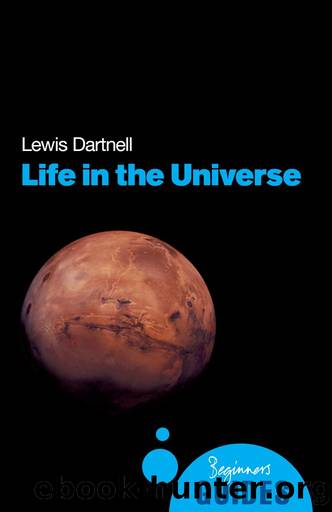Life in the Universe by Lewis Dartnell

Author:Lewis Dartnell [Dartnell, Lewis]
Language: eng
Format: epub
ISBN: 9781780741635
Publisher: Oneworld Publications
Cellular life
All life on Earth uses a DNA/RNA genetic system and an array of proteins oversees its metabolism. The last universal common ancestor (LUCA) must have possessed these attributes before the archaeal and bacterial domains diverged. The LUCA is unlikely to have been a single cell-type; more likely a community of organisms engaged in an orgy of gene exchange, a distributed progenote collective. As different life forms evolved and their cellular systems became idiosyncratic and less flexible, the opportunities for gene sharing lessened. The fundamental protein translation machinery âsolidifiedâ first; metabolic enzymes are still being passed between distant relatives. Today, there are two prokaryotic cell types â archaea and bacteria â but it is possible that other, fundamentally different, life forms split from the common ancestor, evolved, exchanged genes, then succumbed to extinction. This might explain the curious presence, in eukaryotes, of some genes that donât seem to resemble anything found in either archaea or bacteria.
One of the biggest questions about the very first cells was whether they were autotrophs or heterotrophs. Were they self-reliant, able to extract energy and fix carbon from inorganic reactions (autotrophs) or did they need to consume preformed organic molecules from their surroundings (heterotrophs)?
If the primordial atmosphere was sufficiently reducing, abiotic reactions, driven by UV, lightning or black smokers, might have provided the first cells with a ready feast of complex organic substances. As the biosphere grew, this food supply would have gradually dwindled, forcing the hungry cells to evolve methods of generating the substances they needed for themselves; moving from heterotrophy to autotrophy. In a less reducing atmosphere, autotrophy might have developed first, with heterotrophy a later adaptation to living off the efforts of autotrophs.
One way of settling the argument is to look at the tree of life, which plots the relatedness of different cells. The root of this tree, the current organism that is most closely related to all other organisms, would give us some indication of what the universal ancestor was like. Unfortunately, drawing such a wide-ranging family tree is very difficult; depending on what assumptions are made and what statistics are used, the root moves about. For now, it is impossible for us to tell whether the LUCA was autotrophic or heterotrophic. However, one pattern is common to the slightly different trees that have been constructed. Most show an archaeal hyperthermophile in the middle, suggesting that the mother of all life on Earth lived in very hot water. This lends weight to the theory that life emerged in the chimneys of deep sea vents but another interpretation is equally plausible. Towards the end of the heavy bombardment, impacts large enough to completely boil away all water and sterilise the Earth had stopped but smaller impacts, dumping enough energy to heat the oceans substantially would have continued. Perhaps it was not that the first life was thermophilic but simply that the only cells that survived to the end of the heavy bombardment were those that could tolerate these temperature bottlenecks well enough to repopulate the world.
Download
This site does not store any files on its server. We only index and link to content provided by other sites. Please contact the content providers to delete copyright contents if any and email us, we'll remove relevant links or contents immediately.
Sapiens: A Brief History of Humankind by Yuval Noah Harari(14209)
Sapiens by Yuval Noah Harari(5280)
Pale Blue Dot by Carl Sagan(4883)
Homo Deus: A Brief History of Tomorrow by Yuval Noah Harari(4798)
Livewired by David Eagleman(3663)
Origin Story: A Big History of Everything by David Christian(3631)
Brief Answers to the Big Questions by Stephen Hawking(3354)
Inferior by Angela Saini(3260)
Origin Story by David Christian(3132)
Signature in the Cell: DNA and the Evidence for Intelligent Design by Stephen C. Meyer(3054)
The Gene: An Intimate History by Siddhartha Mukherjee(3029)
The Evolution of Beauty by Richard O. Prum(2924)
Aliens by Jim Al-Khalili(2775)
How The Mind Works by Steven Pinker(2713)
A Short History of Nearly Everything by Bryson Bill(2616)
Sex at Dawn: The Prehistoric Origins of Modern Sexuality by Ryan Christopher(2472)
From Bacteria to Bach and Back by Daniel C. Dennett(2432)
Endless Forms Most Beautiful by Sean B. Carroll(2413)
Who We Are and How We Got Here by David Reich(2385)
